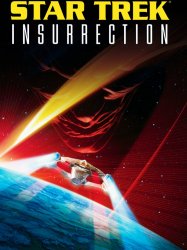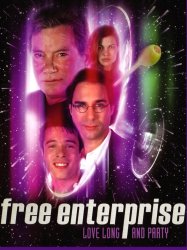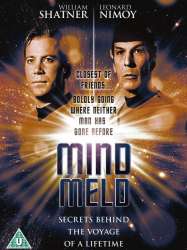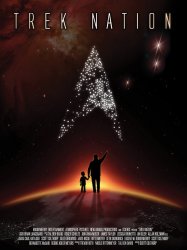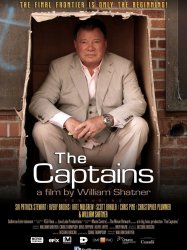Star Trek IV: The Voyage Home is a american film of genre Science fiction directed by Leonard Nimoy released in USA on 26 november 1986 with William Shatner
Star Trek IV: The Voyage Home (1986)

If you like this film, let us know!
Released in USA 26 november 1986
Length 1h50
Directed by Leonard Nimoy
OriginUSA
Themes Films about animals, Space adventure films, Seafaring films, Transport films, Time travel films, Dans l'espace, Cétacé, Comedy science fiction films, Films set in the future, Films about extraterrestrial life, Political films, Space opera, Films about extraterrestrial life, Mise en scène d'un cétacé
Rating72%










Star Trek IV: The Voyage Home is a 1986 American science fiction film released by Paramount Pictures. It is the fourth feature film based on Star Trek, and is a sequel to Star Trek III: The Search for Spock (1984). It completes the story arc begun in The Wrath of Khan and continued in The Search for Spock. Intent on returning home to Earth to face trial for their actions in the previous films, the former crew of the USS Enterprise finds the planet in grave danger from an alien probe attempting to contact now-extinct humpback whales. The crew travel to Earth's past to find whales who can answer the probe's call.
After directing The Search for Spock, cast member Leonard Nimoy was asked to direct the next feature, and given greater freedom regarding the film's content. Nimoy and producer Harve Bennett conceived a story with an environmental message and no clear-cut villain. Dissatisfied with the first screenplay produced by Steve Meerson and Peter Krikes, Paramount hired The Wrath of Khan writer and director Nicholas Meyer. Meyer and Bennett divided the story between them and wrote different parts of the script, requiring approval from Nimoy, lead actor William Shatner, and Paramount.
Principal photography commenced on February 24, 1986. Unlike previous Star Trek films, The Voyage Home was shot extensively on location; many real settings and buildings were used as stand-ins for scenes set around and in the city of San Francisco. Special effects firm Industrial Light & Magic (ILM) assisted in postproduction and the film's special effects. Few of the humpback whales in the film were real: ILM devised full-size animatronics and small motorized models to stand in for the real creatures.
The Voyage Home premiered on November 26, 1986, in North America, becoming the top-grossing film in the weekend box office. The film's humor and unconventional story were well received by critics, fans of the series and the general audience. It was financially successful, earning $133 million worldwide.
The film earned several awards and four Academy Award nominations for its cinematography and audio. It was dedicated to the crew of the Space Shuttle Challenger, which broke up 73 seconds after takeoff on the morning of January 28, 1986. Principal photography for The Voyage Home began four weeks after Challenger and her crew were lost.
Synopsis
In 2286, a large cylindrical probe moves through space, sending out an indecipherable signal and disabling the power of ships it passes. As it takes up orbit around Earth, its signal disables the global power grid and generates planetary storms, creating catastrophic, sun-blocking cloud cover. Starfleet Command sends out a planetary distress call and warns starships not to approach Earth.Actors

William Shatner
(Kirk)

DeForest Kelley
(McCoy)

Leonard Nimoy
(Spock)

James Doohan
(Scotty)

George Takei
(Sulu)
Comments
Leave comment :
Suggestions of similar film to Star Trek IV: The Voyage Home
There are 133 films with the same actors, 7 films with the same director, 24252 with the same cinematographic genres (including 45 with exactly the same 4 genres than Star Trek IV: The Voyage Home), 17745 films with the same themes (including 0 films with the same 14 themes than Star Trek IV: The Voyage Home), to have finally 70 suggestions of similar films.If you liked Star Trek IV: The Voyage Home, you will probably like those similar films :
 , 2h6
, 2h6Directed by Leonard Nimoy, William Shatner, Robert Wise, Stephen Collins, Gene Roddenberry, Persis Khambatta
Origin USA
Genres Science fiction, Action, Adventure
Themes Space adventure films, Dans l'espace, Films set in the future, Films about extraterrestrial life, Political films, Space opera, Films about extraterrestrial life, Robot films
Actors William Shatner, Leonard Nimoy, DeForest Kelley, James Doohan, Walter Koenig, Nichelle Nichols
Rating64%





In 2273, a Starfleet monitoring station, Epsilon Nine, detects an alien force, hidden in a massive cloud of energy, moving through space towards Earth. The cloud destroys three of the Klingon Empire's new K't'inga-class warships and the monitoring station en route. On Earth, the starship Enterprise is undergoing a major refit; her former commanding officer, James T. Kirk, has been promoted to Admiral and works in San Francisco as Chief of Starfleet Operations. Starfleet dispatches Enterprise to investigate the cloud entity as the ship is the only one in intercept range, requiring her new systems to be tested in transit.
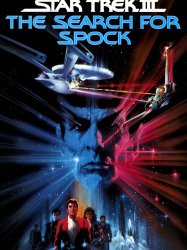 , 1h45
, 1h45Directed by Leonard Nimoy
Origin USA
Genres Science fiction, Thriller, Action, Adventure
Themes Space adventure films, Dans l'espace, Films set in the future, Films about extraterrestrial life, Political films, Space opera, Films about extraterrestrial life
Actors William Shatner, Leonard Nimoy, DeForest Kelley, James Doohan, George Takei, Walter Koenig
Rating65%





The Federation Starship Enterprise returns to Earth following a battle with the superhuman Khan Noonien Singh, who tried to destroy the Enterprise by detonating an experimental terraforming device known as Genesis. The casualties of the fight include Admiral James T. Kirk's Vulcan friend, Spock, whose casket was launched into space and eventually landed on the planet created by the Genesis Device. On arriving at Earth Spacedock, Doctor Leonard McCoy begins to act strangely and is detained. Starfleet Admiral Morrow visits the Enterprise and informs the crew the ship is to be decommissioned; the crew is ordered not to speak about Genesis due to political fallout over the device.
 , 1h42
, 1h42Directed by William Shatner
Origin USA
Genres Science fiction, Thriller, Action, Adventure
Themes Space adventure films, Dans l'espace, Films set in the future, Films about extraterrestrial life, Political films, Space opera, Films about extraterrestrial life
Actors Leonard Nimoy, William Shatner, DeForest Kelley, James Doohan, Walter Koenig, Nichelle Nichols
Rating55%





The crew of the newly commissioned USS Enterprise (NCC-1701-A) are enjoying shore leave after the starship's shakedown cruise goes poorly. At Yosemite National Park, Captain James T. Kirk is camping with Spock and Dr. Leonard McCoy. Their leave is interrupted when the Enterprise is ordered by Starfleet Command to rescue human, Klingon, and Romulan hostages on the planet Nimbus III. Learning of the Enterprise 's mission, the Klingon Captain Klaa decides to pursue Kirk for personal glory.
 , 1h53
, 1h53Directed by Steven-Charles Jaffe, Nicholas Meyer, Ralph Winter
Origin USA
Genres Science fiction, Thriller, Action, Adventure
Themes Space adventure films, Dans l'espace, Films set in the future, Films about extraterrestrial life, Political films, Space opera, Films about extraterrestrial life
Actors William Shatner, DeForest Kelley, Leonard Nimoy, James Doohan, Walter Koenig, Nichelle Nichols
Rating71%





As a Klingon moon, Praxis, explodes without warning, the starship USS Excelsior, commanded by Captain Hikaru Sulu, is struck by the shock wave and its crew discovers that much of the moon has been obliterated. The loss of their key energy production facility and the destruction of the Klingon homeworld's ozone layer throws the Klingon Empire into turmoil. No longer able to maintain a hostile footing, the Klingons sue for peace with their longstanding enemy, the United Federation of Planets. Accepting the proposal before the Klingons revert to a more belligerent approach, Starfleet sends the USS Enterprise-A to meet with the Klingon Chancellor, Gorkon, and escort him to negotiations on Earth. Enterprise 's captain, James T. Kirk, whose son David was murdered by Klingons years earlier, opposes the negotiations and resents his assignment.

Directed by Philip Kaufman
Origin USA
Genres Science fiction, Adventure
Themes Space adventure films, Films set in the future, Films about extraterrestrial life, Political films, Space opera, Films about extraterrestrial life
Actors William Shatner, Leonard Nimoy, DeForest Kelley, James Doohan, Walter Koenig, Nichelle Nichols
In the original treatment by Chris Bryant and Allan Scott, the USS Enterprise investigates the disappearance of the USS DaVinci. Upon arriving at the last known location, they find no other ship, but Captain James T. Kirk is struck by electromagnetic waves and leaves the Enterprise in a shuttlecraft. He pilots it out into space and disappears. Three years pass and the Enterprise returns to the area under Captain Gregory Westlake, after picking up Spock, who had retired from Starfleet and returned to Vulcan. The crew discovers a previously hidden planet at the location where Kirk vanished. They believe it to be the planet of the Titans, a mythical and powerful alien race. However, the planet is being drawn into a black hole. The Klingons also want to claim the planet. Spock travels to the surface and finds Kirk, who has been living on the planet for three years. Together, they discover the planet is inhabited by the Cygnans, who destroyed the Titans. The planet and the Enterprise enter the black hole, with the Cygnans being destroyed in the process. The ship emerges in orbit of Earth during the Paleolithic era, and the crew teach early man to make fire, in effect becoming the Titans themselves, in essence a reference to 2001: A Space Odyssey (1968). Planet of the Titans also explored the concept of the third eye, and was later compared to the appearance of the Greek Gods in the original series episode "Who Mourns for Adonais?".

Origin USA
Genres Science fiction
Themes Space adventure films, Films set in the future, Films about extraterrestrial life, Political films, Space opera, Films about extraterrestrial life
Actors William Shatner, Leonard Nimoy, DeForest Kelley, James Doohan, Walter Koenig, Nichelle Nichols
The five-year mission seen in The Original Series has finished, and the crew has moved on from the Enterprise. Captain James T. Kirk has been promoted to Admiral, Doctor Leonard McCoy has left Starfleet to become a veterinarian while other members of the crew have been given desk jobs. This has led engineer Montgomery Scott to become an alcoholic through boredom. Spock had returned to the planet Vulcan where he was seeking to control his human half.
 , 1h53
, 1h53Directed by Nicholas Meyer
Origin USA
Genres Drama, Science fiction, Thriller, Action, Adventure
Themes Space adventure films, Monde imaginaire, Dans l'espace, Sur une planète fictive, Films set in the future, Films about extraterrestrial life, Political films, Space opera, Films about extraterrestrial life
Actors William Shatner, Ricardo Montalbán, Leonard Nimoy, DeForest Kelley, James Doohan, George Takei
Rating76%





In the year 2285, Admiral James T. Kirk oversees a simulator session of Captain Spock's trainees. In the simulation, Lieutenant Saavik commands the starship USS Enterprise on a rescue mission to save the crew of a damaged ship. When the Enterprise enters the Klingon Neutral Zone to reach the ship it is attacked by Klingon cruisers and critically damaged. The simulation is named the "Kobayashi Maru"—a no-win scenario designed to test the character of Starfleet officers. Later, Dr. McCoy joins Kirk on his birthday; seeing Kirk in low spirits, the doctor advises Kirk to get a new command and not grow old behind a desk.

To Be Takei (2014)
, 1h30Origin USA
Genres Documentary
Themes Prison films, Films about racism, Films about sexuality, Films about television, LGBT-related films, Documentary films about business, Documentary films about the film industry, Documentary films about racism, Documentary films about law, Documentary films about war, Documentary films about historical events, Documentaire sur l'homosexualité, Political films, Documentary films about World War II, Space opera, LGBT-related films, LGBT-related film
Actors George Takei, Leonard Nimoy, Walter Koenig, William Shatner, Nichelle Nichols, Lea Salonga
Rating69%





The film narrates the life journey of actor and activist George Takei.

Trekkies (1999)
, 1h26Directed by Roger Nygard
Origin USA
Genres Comedy, Documentary
Themes Films about television, Documentaire sur une personnalité, Space opera
Actors Denise Crosby, Majel Barrett, James Doohan, DeForest Kelley, Leonard Nimoy, Michael Dorn
Rating68%





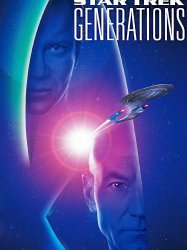
Star Trek: Generations (1994)
, 1h57Directed by David Carson, David Carson
Origin USA
Genres Science fiction, Thriller, Action, Adventure
Themes Space adventure films, Time travel films, Dans l'espace, Films set in the future, Films about extraterrestrial life, Political films, Space opera, Films about extraterrestrial life, Robot films
Actors LeVar Burton, Michael Dorn, Jonathan Frakes, William Shatner, Gates McFadden, Patrick Stewart
Rating65%





In the year 2293, retired Captain James T. Kirk, Montgomery Scott, and Pavel Chekov attend the maiden voyage of the Federation starship USS Enterprise-B, under the command of the unseasoned Capt. John Harriman. During the voyage, Enterprise is pressed into a rescue mission to save two El-Aurian ships from a strange energy ribbon. Enterprise is able to save some of the refugees before their ships are destroyed, but the starship becomes trapped in the ribbon. Kirk goes to deflector control to alter the deflector dish, allowing Enterprise to escape, but the trailing end of the ribbon rakes across Enterprise 's hull, exposing the section Kirk is in to space; he is presumed dead.
 Connection
Connection


